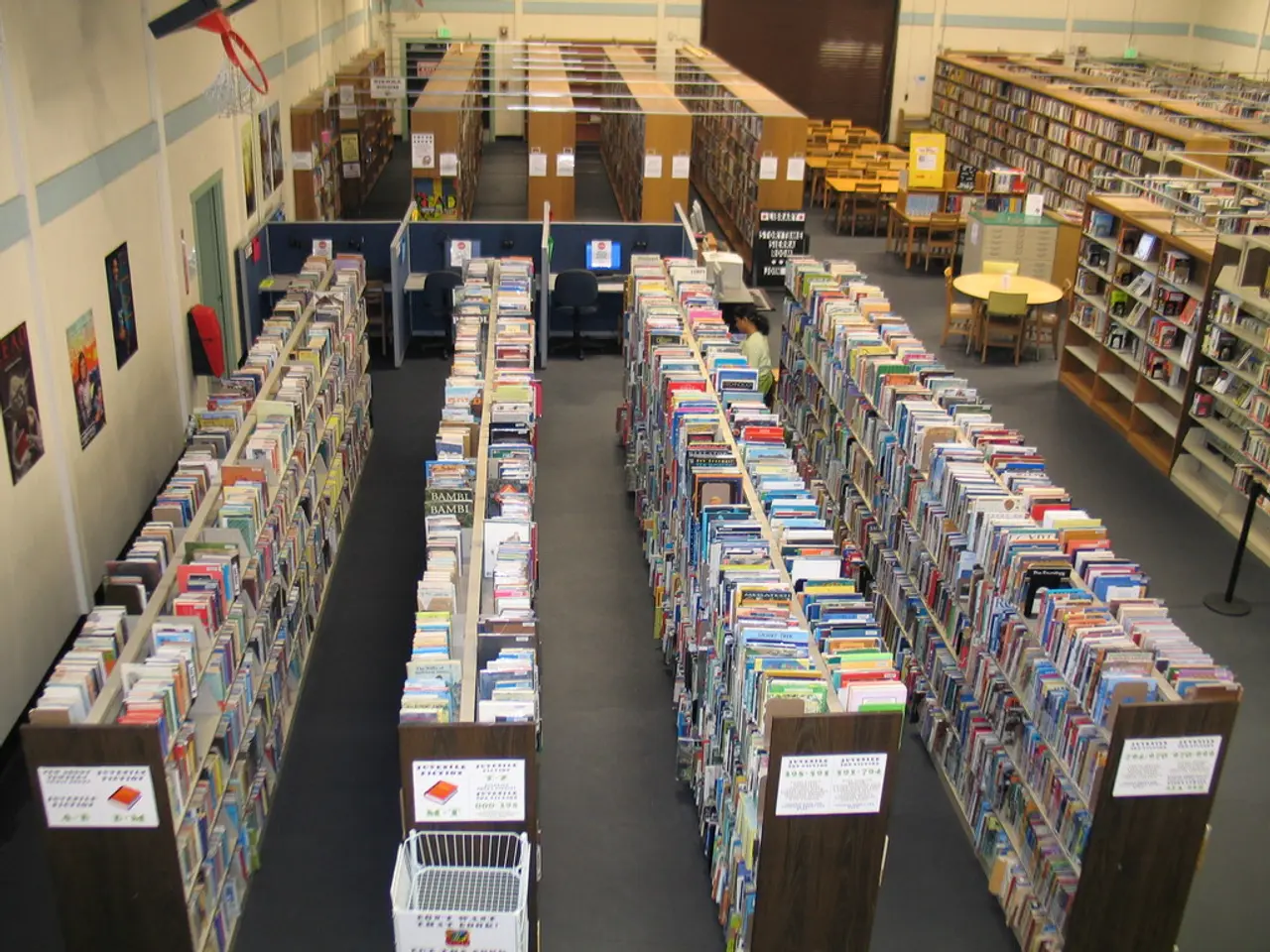The Continuing Importance of Library Storytime in Fostering Student Education
In a world where technology is advancing at an unprecedented pace, the humble tradition of library storytime continues to be a beacon of literacy development for both young and older learners. This article explores the significant benefits that storytime offers in building vocabulary, enhancing comprehension, boosting engagement, and fostering emotional development.
For early learners, library storytime serves as a vital stepping stone in their literacy journey. By exposing children to a rich array of words beyond everyday conversation, storytime helps build a robust vocabulary. Adults often explain new words or talk about pictures to expand understanding, thereby aiding in the development of early reading skills [1].
Moreover, storytime provides an opportunity for adults to model reading behaviors, such as tracking text with a finger, demonstrating that words, not just pictures, convey meaning [1]. This practice stimulates early language and narrative comprehension, as hearing stories read aloud fosters brain development related to visual imagery, memory, and understanding sequences and story structures [2].
Storytime also plays a crucial role in enhancing fine motor and cognitive skills through interactions during the sessions, preparing children for more complex literacy tasks [4].
For older students and reluctant readers, storytime and being read aloud to can be a transformative experience. It can boost engagement and motivation, making reading a shared, enjoyable activity [2]. Storytime also supports comprehension of complex texts, aiding in the processing and understanding of materials that might be challenging to read independently [2].
Furthermore, exposure to diverse characters and situations broadens students’ perspectives and social understanding, fostering empathy and emotional intelligence [4]. Storytime also encourages sustained reading habits, as it models fluent reading and maintains interest in stories, which correlates with greater academic success and mental wellness [2][3].
In addition, teaching students how to use the library during storytime sessions provides foundational skills for academic success by familiarizing them with library organization, book borrowing, and information-seeking strategies [5].
In the digital age, library technology has advanced, enhancing information literacy lessons. Digital resources have helped librarians facilitate learning in digital spaces, particularly during remote learning [6]. E-books, for instance, enable students to zoom in and out of illustrations, listen to supplemental music, highlight text, quickly look up unfamiliar words, and engage with foreign language translations [7].
The online Master of Education in Library Media can help educators expand their knowledge in instructional media, library media cataloging, and library media center management, preparing them to modernize a school’s library and storytime [8]. An e-book collection can give students a stronger introduction to developing literacy [8].
In summary, library storytime enriches literacy development by combining vocabulary acquisition, comprehension support, motivation, and social-emotional learning across ages, making it a powerful, inclusive tool for lifelong literacy [1][2][3][4][5]. It remains a critical component of young children's preparation for school and serves as one of the central ways to motivate students to read, write, and develop advanced vocabularies [9]. The paper presents a new model for understanding learning environments that motivate students to engage with new words [10]. Library storytime includes more rare words and greater lexical diversity, making it an invaluable resource in the literacy development journey.
In this digital age, library storytime serves as a vital bridge between traditional learning and technology-infused education-and-self-development, fostering personal-growth through enhanced vocabulary and cognitive skills. For both children and adults, storytime offers an engaging and effective means of learning beyond the confines of textbooks, contributing to a lifelong journey of personal growth and development.




